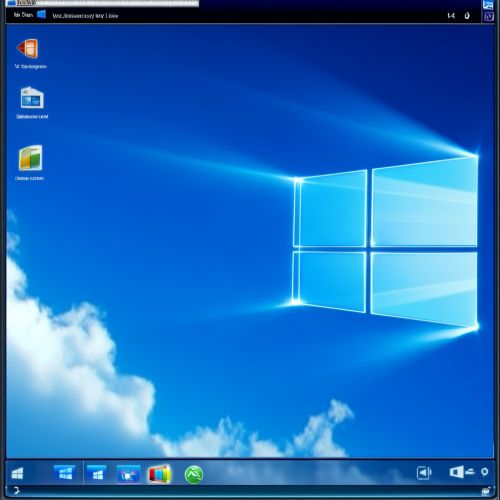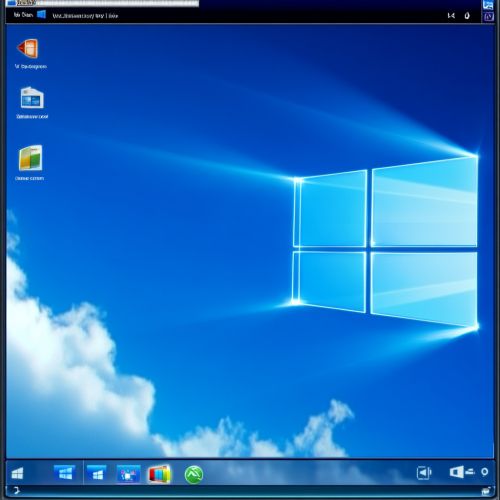Windows Vista
Introduction
Windows Vista is an operating system developed by Microsoft, released to manufacturing on November 8, 2006, and made generally available on January 30, 2007. It is the successor to Windows XP, released five years earlier, and was succeeded by Windows 7 in October 2009. Windows Vista introduced several new features and aimed to enhance security, performance, and user experience.
Development
The development of Windows Vista, codenamed "Longhorn," began in May 2001, prior to the release of Windows XP. The project experienced several delays and changes in scope, leading to a prolonged development cycle. The initial vision for Longhorn included a revolutionary new file system called WinFS, which was eventually shelved due to complexity and performance concerns.
Features
Windows Vista introduced a plethora of new features and improvements over its predecessor, Windows XP. These features can be broadly categorized into user interface enhancements, security improvements, performance optimizations, and new applications.
User Interface Enhancements
One of the most noticeable changes in Windows Vista was the introduction of the Aero graphical user interface. Aero featured translucent window borders, live thumbnails, and a new taskbar. The Start menu was redesigned to include a search box, allowing users to quickly find files and applications.


The Sidebar, another new feature, allowed users to place mini-applications called gadgets on the desktop. These gadgets provided quick access to information such as weather, news, and system performance.
Security Improvements
Windows Vista introduced several security enhancements aimed at addressing the vulnerabilities that plagued Windows XP. One of the most significant additions was User Account Control (UAC), a feature designed to prevent unauthorized changes to the system by prompting users for permission before allowing administrative tasks.
BitLocker Drive Encryption was another notable security feature, providing full-disk encryption to protect data on lost or stolen devices. Windows Defender, an anti-spyware program, was included to help protect against malware.
Performance Optimizations
Windows Vista included several performance improvements, such as ReadyBoost, which allowed the use of USB flash drives to supplement system memory. SuperFetch, another performance enhancement, was designed to pre-load frequently used applications into memory to reduce load times.
The operating system also introduced a new graphics driver model, the Windows Display Driver Model (WDDM), which improved stability and performance by isolating graphics drivers from the kernel.
New Applications
Windows Vista came with several new and updated applications. Windows Mail replaced Outlook Express as the default email client, while Windows Calendar and Windows Contacts provided new tools for managing schedules and contacts.
Windows Media Player 11 featured a redesigned interface and improved media library management. Windows Photo Gallery offered basic photo editing and organization tools, and Windows DVD Maker allowed users to create DVDs with custom menus and slideshows.
Editions
Windows Vista was released in six different editions, each targeting different segments of the market:
- Windows Vista Starter: Aimed at low-cost PCs in emerging markets, with limited functionality and hardware support.
- Windows Vista Home Basic: Designed for basic home use, lacking some of the advanced features of higher editions.
- Windows Vista Home Premium: Included additional features such as Windows Media Center and Aero interface.
- Windows Vista Business: Targeted at small and medium-sized businesses, with features like Remote Desktop and domain join.
- Windows Vista Enterprise: Available only to volume license customers, offering advanced features like BitLocker and Virtual PC.
- Windows Vista Ultimate: Combined all features of Home Premium and Business editions, along with exclusive extras.
Reception
Windows Vista received mixed reviews upon release. While some praised its new features and improved security, others criticized its performance, hardware requirements, and compatibility issues. The operating system was often seen as resource-intensive, leading to slower performance on older hardware.
Despite these criticisms, Windows Vista laid the groundwork for many features and improvements that would be refined in subsequent versions of Windows.
Legacy
Windows Vista's legacy is a mixed one. While it introduced several important features and security improvements, its high system requirements and compatibility issues led to a lukewarm reception. However, many of the innovations in Vista, such as UAC, Aero, and BitLocker, have become standard in later versions of Windows.
